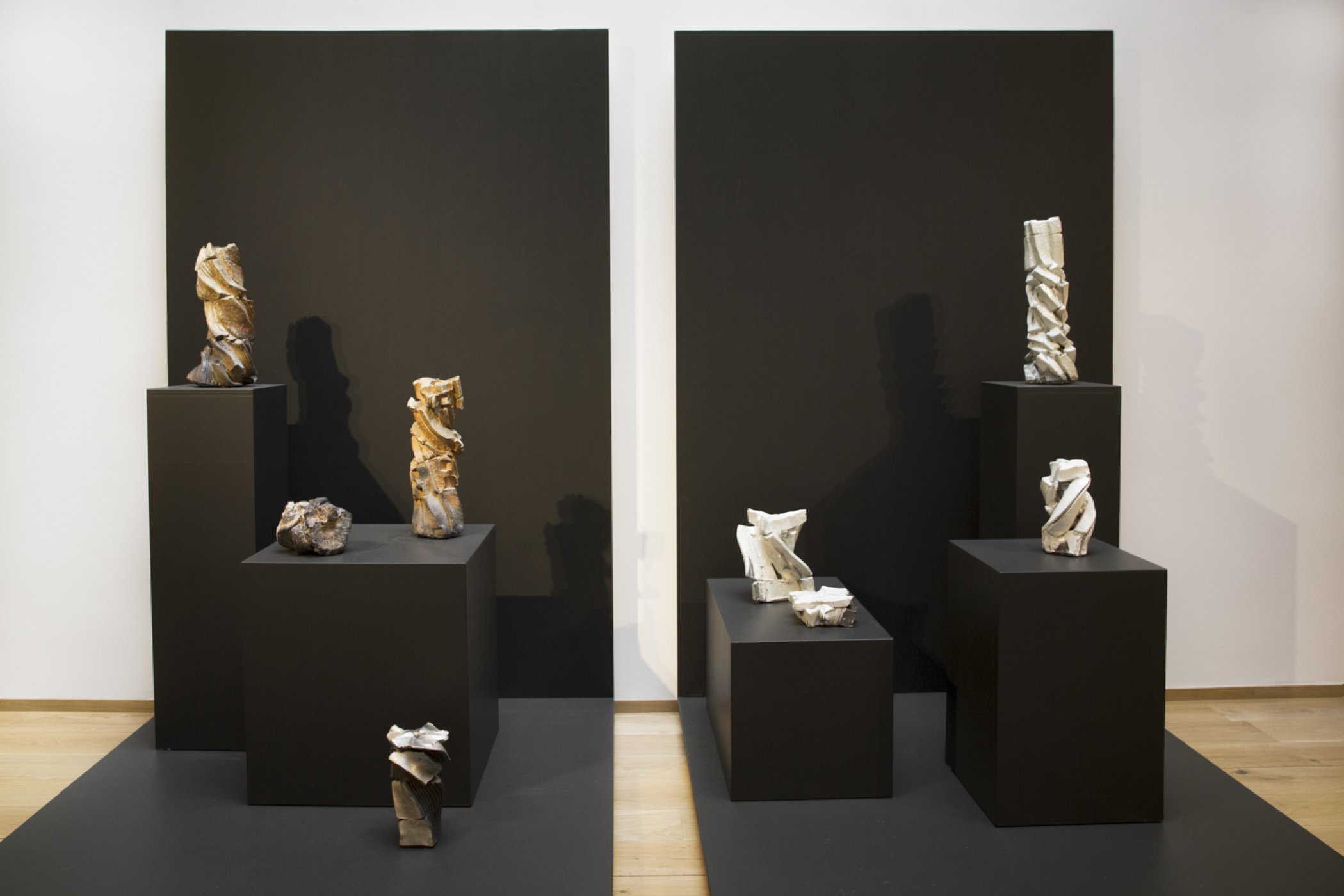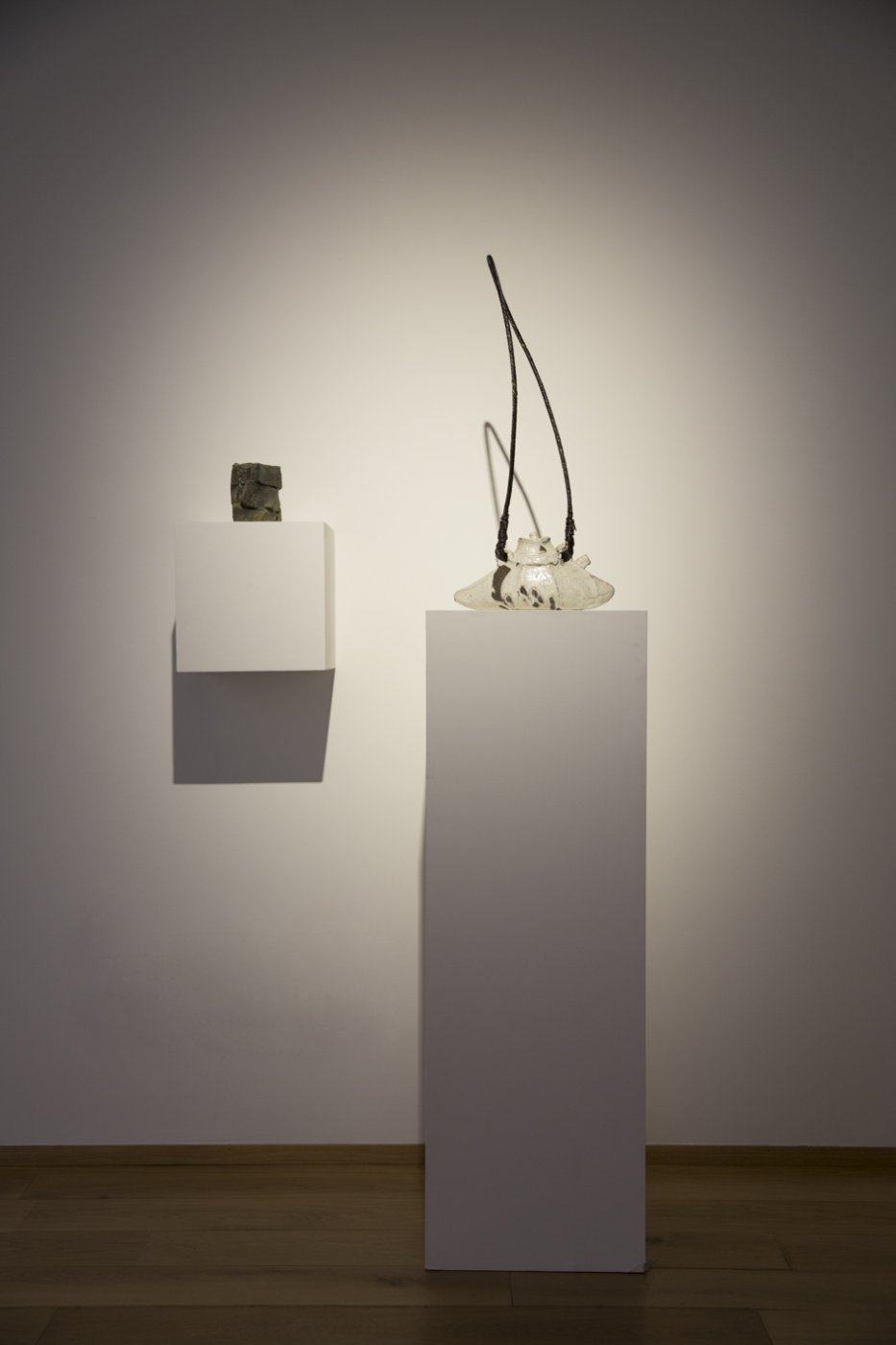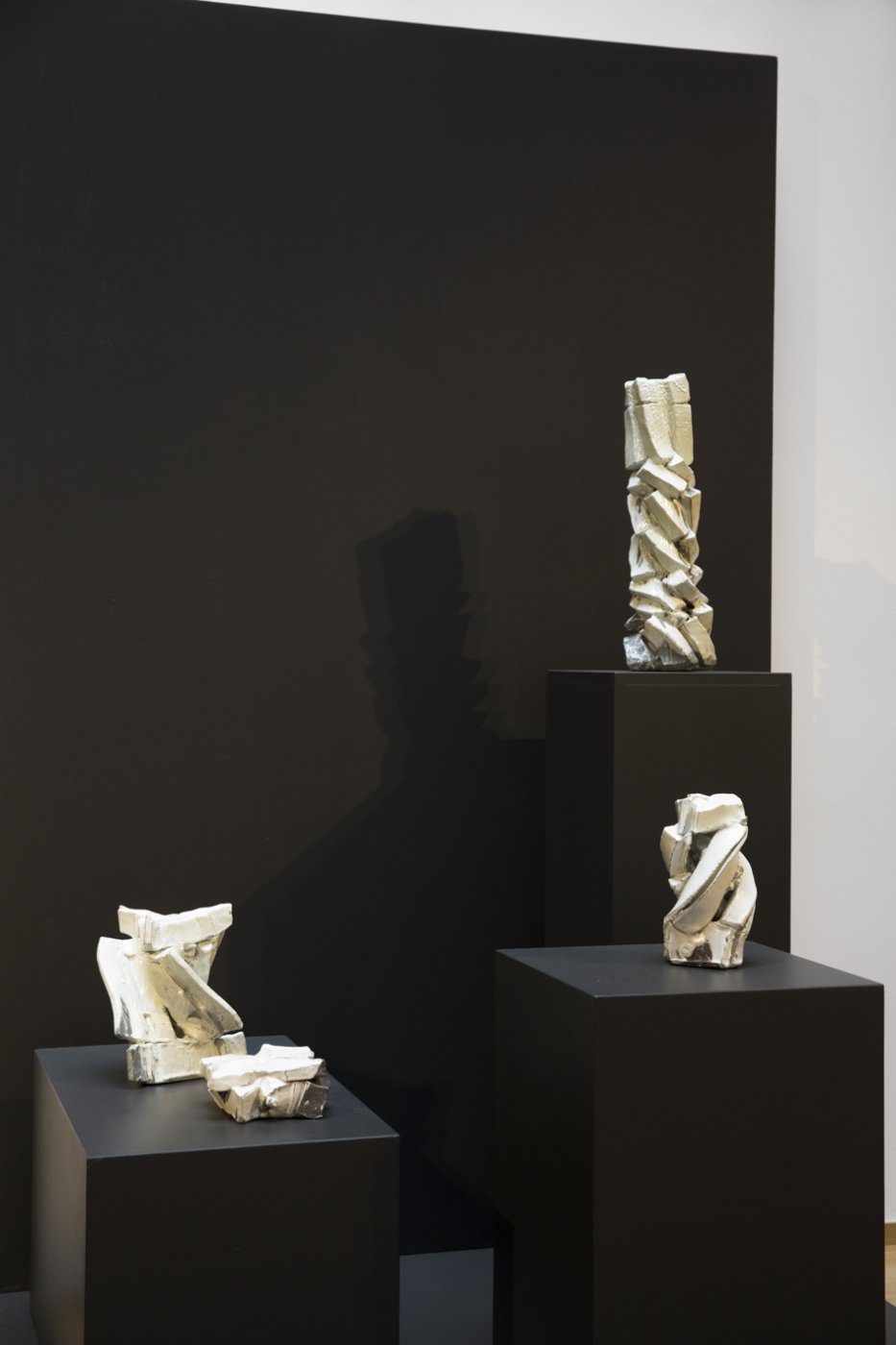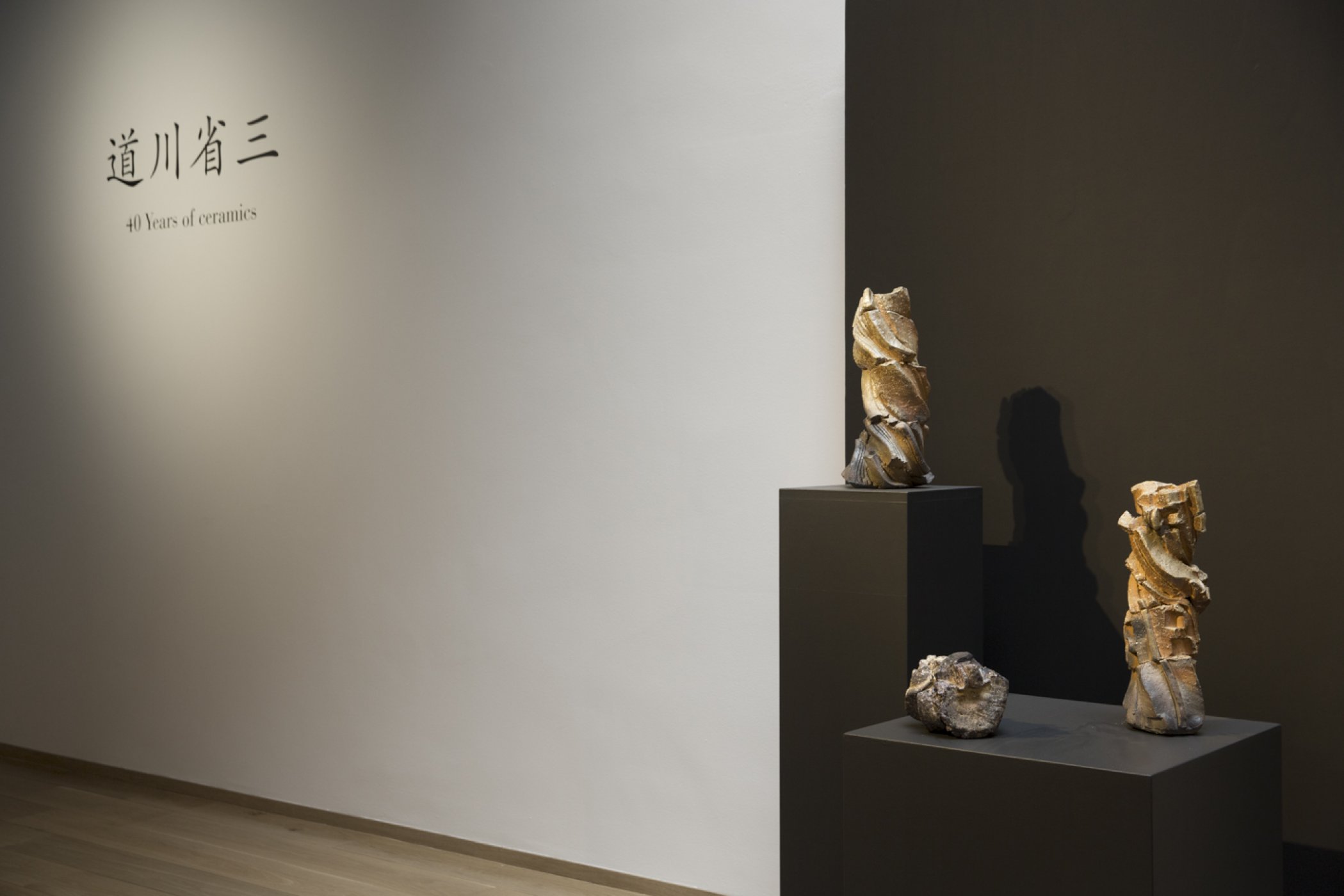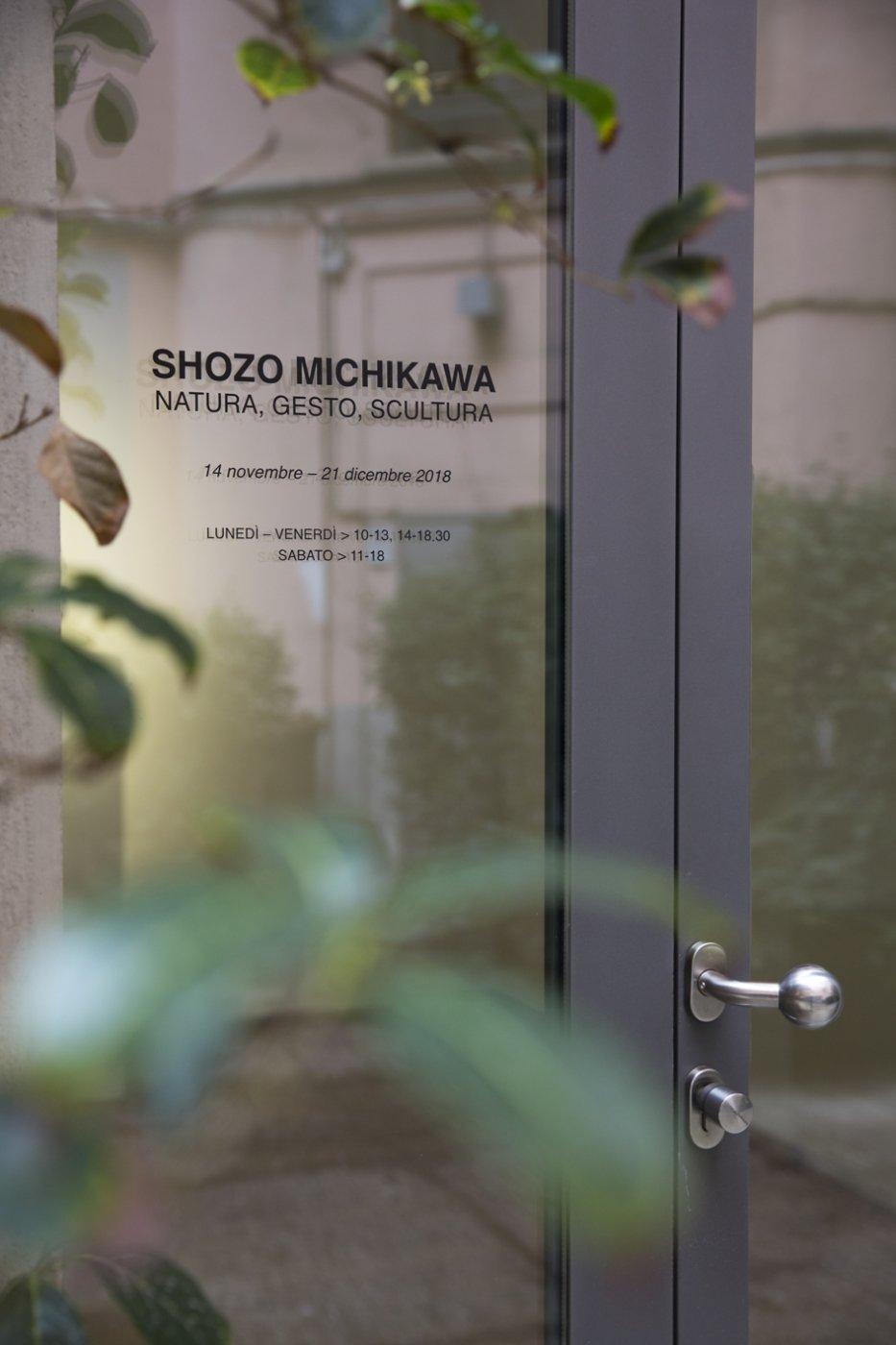Shozo Michikawa: Nature, Gesture, Sculpture
14th November – 21st December 2018
Press preview and opening: Tuesday 13th November 2018, 6.30 pm
Officine Saffi, Via Aurelio Saffi 7, 20123, Milano
Press preview and opening: Tuesday 13th November 2018, 6.30 pm
Officine Saffi, Via Aurelio Saffi 7, 20123, Milano
Officine Saffi is pleased to present a solo exhibition on the occasion of the 40th anniversary of Shozo Michikawa as a ceramic artist. The dialectical relationship between matter and structure has for some time animated the history of sculpture, and in particular of ceramic sculpture. A dialectical relationship which implies on the one hand a formal reference which more or less implicitly refers to geometry, and on the other the freedom to lend space to the true nature of the clay-matter, exalting its roughness and magmatic appearance.
Following this predominantly Western-oriented dialectical relationship, the work of Shozo Michikawa forms part of a very precise branch of research which, following its period of international popularity in the 1970s, is once again becoming topical, and the natural element is once more a pivotal reference that is not only aesthetic, but much more widely cultural. This form of expressive urgency, which characterises the work of artists born much later than the period of the 1970s to which we referred earlier, now - as was the case then, but with newly-developed methods - blends the natural sense of the material with basic geometric forms and structures from the history of art, from geology, and from the most recent forms of astronomy.In this sense, the work of Michikawa is presented as a “contemporary classic”, a reference to the most vivid examples of contemporariness, revealing extremely personal ties with primitivism on the one hand, and the history of art on the other. As much as the aesthetics of Michikawa’s work can also be characterised by references that are rooted in the informal and post-informal movement and, more recently, in a new-found naturalness, leading his art as far as to become a perfect example of the same, and as much as the artist may be aware and appreciative of the aforementioned references, his production is based on decisively different forms of existence and references, which concern culture, aesthetics and the lyrical influence of the place he has decided to live in, Seto, a city with one of the most ancient traditions of ceramics in a Japan which represents the quintessence of virtuosity and sacredness of the art of working with clay. Nature and sculpture in fact come together in his work in such an essential manner as to become a pure expression of that incredibly austere harmony which is typical of Japanese ceramic - and not only ceramic - art, a distillation of the deepest spiritual intentions of this dialectical relationship. The twists, the scoring, the perpendicular and inclined surfaces harmonise in his works with sections in raw clay, with irregular fissures, fractures which interrupt the clear geometry from which the form originates. They are unusual ceramic constructions in which nature appears to have taken its course and created a new form of beauty free of human intervention. They are vases, bowls and other humble everyday ceramic objects which have been touched by the universal mutation that nature is both the subject and object of.
**Extract from the curatorial essay by Matteo Zauli
Exhibition with the Patronage of Consulate General of Japan in Milan
Following this predominantly Western-oriented dialectical relationship, the work of Shozo Michikawa forms part of a very precise branch of research which, following its period of international popularity in the 1970s, is once again becoming topical, and the natural element is once more a pivotal reference that is not only aesthetic, but much more widely cultural. This form of expressive urgency, which characterises the work of artists born much later than the period of the 1970s to which we referred earlier, now - as was the case then, but with newly-developed methods - blends the natural sense of the material with basic geometric forms and structures from the history of art, from geology, and from the most recent forms of astronomy.In this sense, the work of Michikawa is presented as a “contemporary classic”, a reference to the most vivid examples of contemporariness, revealing extremely personal ties with primitivism on the one hand, and the history of art on the other. As much as the aesthetics of Michikawa’s work can also be characterised by references that are rooted in the informal and post-informal movement and, more recently, in a new-found naturalness, leading his art as far as to become a perfect example of the same, and as much as the artist may be aware and appreciative of the aforementioned references, his production is based on decisively different forms of existence and references, which concern culture, aesthetics and the lyrical influence of the place he has decided to live in, Seto, a city with one of the most ancient traditions of ceramics in a Japan which represents the quintessence of virtuosity and sacredness of the art of working with clay. Nature and sculpture in fact come together in his work in such an essential manner as to become a pure expression of that incredibly austere harmony which is typical of Japanese ceramic - and not only ceramic - art, a distillation of the deepest spiritual intentions of this dialectical relationship. The twists, the scoring, the perpendicular and inclined surfaces harmonise in his works with sections in raw clay, with irregular fissures, fractures which interrupt the clear geometry from which the form originates. They are unusual ceramic constructions in which nature appears to have taken its course and created a new form of beauty free of human intervention. They are vases, bowls and other humble everyday ceramic objects which have been touched by the universal mutation that nature is both the subject and object of.
And it is here that the greatness of Michikawa’s sculpture lies. It conceals his gesture, rendering it so much in harmony with natural dynamics as to appear almost invisible, despite creating objects which, although conceived as sculptures, remain as such. A fleeting, clean and decisive gesture, which in an instant expresses centuries of skill. A gesture animated by a rapidity of execution which is so fast and yet so precise as to potentially emerge solely from an absolute technical mastery and creative clarity.
A synthesis of gestures which is also reflected in the final ceramic work. His sculpture objects convey their expressive power through a narrow range of materials and colours, in full respect of their cultural tradition. Plastic germinations that emerge from the score of an ancient past in which the use of colour often determined the very identity of the artistic object, revealing its origins. A synthesis of colour which amplifies the dialectical power of the work of Shozo Michikawa and which, as can be seen with the many recent white pieces in the exhibition, is gradually becoming stronger, perhaps moving towards an almost absolute monochromy. A meditation on matter and structure, between nature and object, experienced with extreme clarity, with an expressive awareness that embraces centuries-old knowledge and a very contemporary aesthetic with the incisive energy of an extremely rapid gesture.**Extract from the curatorial essay by Matteo Zauli
Exhibition with the Patronage of Consulate General of Japan in Milan


